Gamification Teacher vs. YouTube as "Teacher"
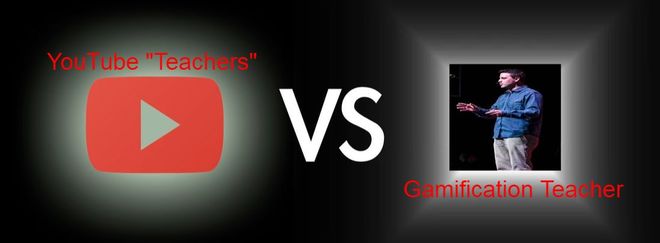
I hope this comes out written as it did in my head. This was a tough one to write and articulate. If you have any questions please post below…
As a science teacher, my biggest nemesis has to be YouTube. Actually, biggest nemesis and supporter, but in this blog I’m going nemesis. Why you might ask? It seems like no matter what I assign in terms of a project, there are 100s of different explanations and variations online, broken down and ready to go. It was not anything I really thought of until I began teaching science 5 years ago. I distinctly remember assigning the creation of a density tower, order to be determined by a viscosity ramp, and lo and behold, I received a ton of identical projects. Coincidently, they came with no mention of a viscosity ramp because the video everyone followed contained none. I began to pull students aside and ask them about their projects and their answers were vague, unclear or flat out nonsensical. It was incredibly frustrating as I had spent a solid week explaining the concepts, performing demos and asking questions which apparently were to no avail. While the moment seemed grim it was my first lightbulb moment towards wanting to change up my program and what would eventually lead me to gamification.
As I’ve mentioned before, once I had a continuous contract, I knew I wanted to change things so I did via gamification. It was a long road but one that was so worthwhile. So what the hell is point of this blog? Well, despite my efforts in gamification, I was still being thwarted by my nemesis – YouTube. I use scenarios to deliver my work, which I call quests. My goal is to always craft them in a way to avoid it being obviously searchable. I want kids to think first not just mindlessly search and follow. It works for most, but when I try to get the major projects, or the deeper thinkers written, YouTube always finds a way. So over this past couple of weeks I decided to take on a different approach.
We are currently tackling Unit 4 of the Alberta Science Curriculum – Mechanical Systems – in the land of Mechanica Mundi where local traitors to Master Heebs, have captured our guilds and have been pitting them against each other for their own entertainment. The final task they were given was to create a mousetrap powered car and the guild who produced a car that travelled the least distance over 5 attempts would be tossed into a battle with the beast of Mechanica Coliseum. The results could be game changing…
Now, at first glance, the results were typical. Students read their scrolls (I’m a stickler for detail) and got to researching. So my first task was to limit them in their research. I said the people provide you with access to resources for day 1. Whatever you have written down after day 1 is all you can use for reference. After that all resources would be confiscated. To do this I simply made students put all of their resources behind my front desk, phones included, so nothing sneaky could happen. Now it was time for some fun …
As we began Day 2, this is where I blindsided the guilds. They arrived with various materials and I quickly asked for them to be placed in the front of the classroom as well. Then I hid them. Nope, not this time. What I did not want was a simple following of instructions with perfectly chosen materials where no thought was put in. I wanted them to fully understand how the car body needed stability to withstand the force of the mousetrap. I wanted them to understand leverage by adding a lever arm to the mouse trap kill bar. I wanted them to understand how the ratio of axel to wheel effected distance. Plain and simple, I wanted them to understand!
“We don’t get our stuff?! What the heck! What do we build with?!” was a very familiar refrain.
“Well, the people have granted you the privilege of searching the grounds for supplies. I need 2 scavengers. You have 8 minutes…”
Here is a video of some of the scavengers from one my classes heading out and about. Watch carefully what one of them says as they head outside … #wsite-video-container-155647854984417469{ background: url(//www.weebly.comhttps://www.mrhebert.org/uploads/1/3/7/7/13773605/img_0943_453.jpg); } #video-iframe-155647854984417469{ background: url(//cdn2.editmysite.com/images/util/videojs/play-icon.png?1524592232); } #wsite-video-container-155647854984417469, #video-iframe-155647854984417469{ background-repeat: no-repeat; background-position:center; } @media only screen and (-webkit-min-device-pixel-ratio: 2), only screen and ( min-device-pixel-ratio: 2), only screen and ( min-resolution: 192dpi), only screen and ( min-resolution: 2dppx) { #video-iframe-155647854984417469{ background: url(//cdn2.editmysite.com/images/util/videojs/@2x/play-icon.png?1524592232); background-repeat: no-repeat; background-position:center; background-size: 70px 70px; } }
What this meant was that the guilds would be tasked with building their cars out of whatever they could find on our school field. *Note: I hid nothing on the field, they were looking for literal garbage* Keep in mind this field would be scavenged by 15 total guilds so everything was 1st come, 1st served.
Here are some photos showing what some of the scavengers salvaged to give you a general idea about what they collected. It wasn’t pretty but this was the goal. More on that soon…
*Side note: this doubled as an awesome school yard clean up! Winnning! * 
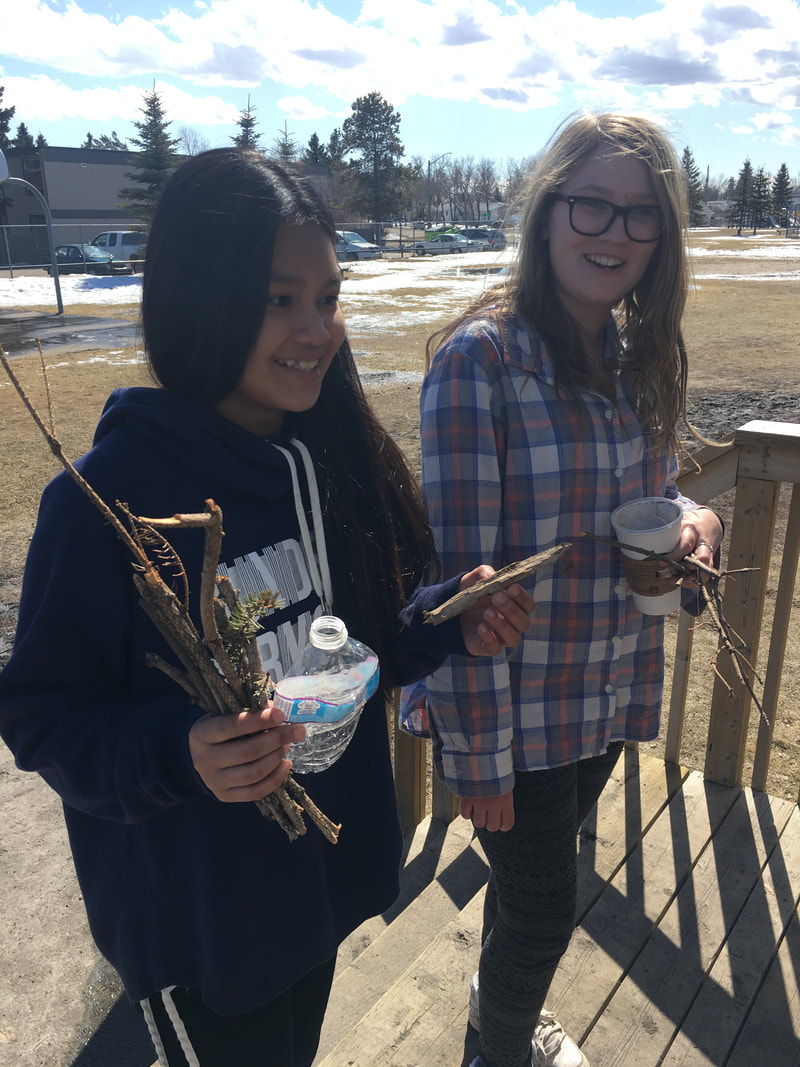 We also setup a table with basic, and often random, items for sale they could buy with their game currency (gold) but they were priced pretty high to force them to think if they really needed it.
We also setup a table with basic, and often random, items for sale they could buy with their game currency (gold) but they were priced pretty high to force them to think if they really needed it.
What ensued was chaos, kids running around, unsure of what to get but knowing they had to get something. You can even hear one of my students shout out that very thing in the video clip above. Once they had their supplies they went on to building and it was everything I hoped it would be. It was frustration, it was cussing under their breath (I heard you guys!) and many wanted to give up. Exactly as planned. I had disrupted the simple process of following step by step and forced them to think. By Day 4 the frustration in the air was tangible as most things weren’t working. It was time for the final phase of my plan. I began by getting my students into their guilds and asking them how it was going. The expected release of frustration and panic flooded the room. I then told them something they weren’t expecting, “I knew this would happen, I wanted you to feel frustrated. This is meant to be hard, I don’t even know if it is possible”. Another wave of questions and frustration was then silenced when I asked them…
“When you follow steps, using perfect resources, without really thinking about it … are you learning?” Awkward silence, which I broke by telling them the true motive of this quest. “You know what I saw on Twitter a week ago? The top 3 skills employers want in their employees by 2020. They are: complex problem solving, critical thinking and creativity. *Dramatic pause* Is that not what this is? This was designed to teach you those exact skills. See how many of you didn’t think about what the resources and videos were showing you, you just saw what they showed you. They taught you why you needed a lever arm and you ignored it, you just saw a lever made of steel, brought one and so on. The world does not need people who can’t think for themselves, robots will be taking care of that. I want to create thinkers. Now think…” 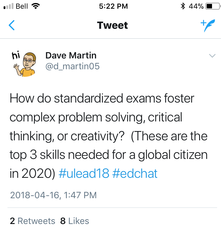 Here is the tweet in question from the ULead2018 Conference. An awesome conference put on by the ATA! What followed literally blew me away. By being honest and letting my students know I acknowledged it was tough, explaining to them what the goal (3 key skills) was and overtly challenging them to not be lazy, they began to work feverishly. Their entire perspective changed. I began to see failure begin met with “tweak this” or “this is too long” and so on. They took failure exactly as it should to be viewed, a learning tool. Over the course of 1 class I saw an increase from literally 0 moving cars to an average of 3 per class. Moving from 0 cms to nearly 1 meter. The results were astounding. Completely shocking to be honest. So what are my big takeaways here?
Here is the tweet in question from the ULead2018 Conference. An awesome conference put on by the ATA! What followed literally blew me away. By being honest and letting my students know I acknowledged it was tough, explaining to them what the goal (3 key skills) was and overtly challenging them to not be lazy, they began to work feverishly. Their entire perspective changed. I began to see failure begin met with “tweak this” or “this is too long” and so on. They took failure exactly as it should to be viewed, a learning tool. Over the course of 1 class I saw an increase from literally 0 moving cars to an average of 3 per class. Moving from 0 cms to nearly 1 meter. The results were astounding. Completely shocking to be honest. So what are my big takeaways here?
When it comes to assigning tasks that you know have obvious steps to follow and are easily found online in places like YouTube, create scenarios to limit their use. These videos or guides should be used as help for our students but they often miss that point mistaking that simply doing exactly what they see shows they understand. It doesn’t.
Remove the perfect resources and bring the environment and/or scenario you say the students are in to life. Force students to remember what the video said not how the video said to do it. Get them to see a small branch as a lever bar or an old drinking cup as a car body. Let them create.
Acknowledge that failure it OK and it is part of learning. Be real and be honest. Challenge their belief that to be good the project has to look good. Let them put the proverbial square peg in the round hole.
Emphasize that giving up is not an option. Perseverance is such an essential skill in today’s day and age because we all have access to everything but know so little about everything.
YouTube, Google and all the other sites like them are always going to exist. In many cases they provide great learning opportunities and are actually quite useful. In other cases, though, such as in science, they can simply be a crutch for students. Change the game up and catch your students off guard. You’ll be surprised that when you force them to think, when you take away their biggest “thinking tool” what connections they can truly make. Do not be afraid to put them between a rock and hard place.
The crowning achievement to this quest design? My guild that is currently in last place, and has been for some time, took the quest message to heart. So much so that they won the competition, crushing their opponents, much to the shock of everyone. Could be a massive changing point, I guess time will tell.
I just love gamification …
Until next time
-Master Heebs #wsite-video-container-552583146323182520{ background: url(//www.weebly.comhttps://www.mrhebert.org/uploads/1/3/7/7/13773605/car_runs_128.jpg); } #video-iframe-552583146323182520{ background: url(//cdn2.editmysite.com/images/util/videojs/play-icon.png?1524592232); } #wsite-video-container-552583146323182520, #video-iframe-552583146323182520{ background-repeat: no-repeat; background-position:center; } @media only screen and (-webkit-min-device-pixel-ratio: 2), only screen and ( min-device-pixel-ratio: 2), only screen and ( min-resolution: 192dpi), only screen and ( min-resolution: 2dppx) { #video-iframe-552583146323182520{ background: url(//cdn2.editmysite.com/images/util/videojs/@2x/play-icon.png?1524592232); background-repeat: no-repeat; background-position:center; background-size: 70px 70px; } } Here are some successful and unsuccessful runs of some of their cars. What I like is the positive attitude you can see and the fun they are having. Once they got the idea behind the project the whole tone changed. Also, to honour my winners, here they are with their car, showing their total distance traveled over 5 attempts (7.92m) and their finished car. Pretty impressive for old Popsicle sticks, sticks and some tape. Well done PeaceKeepers from 8W! 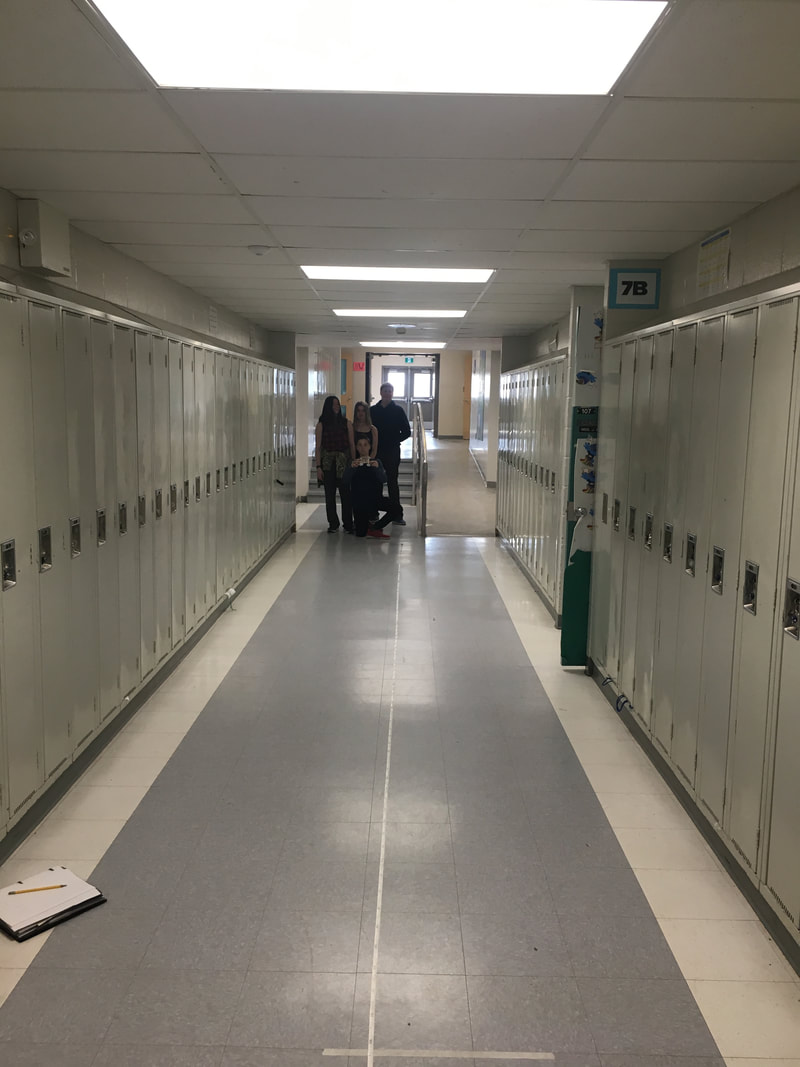 The winning team showing their overall winning distance … 7.92m
The winning team showing their overall winning distance … 7.92m 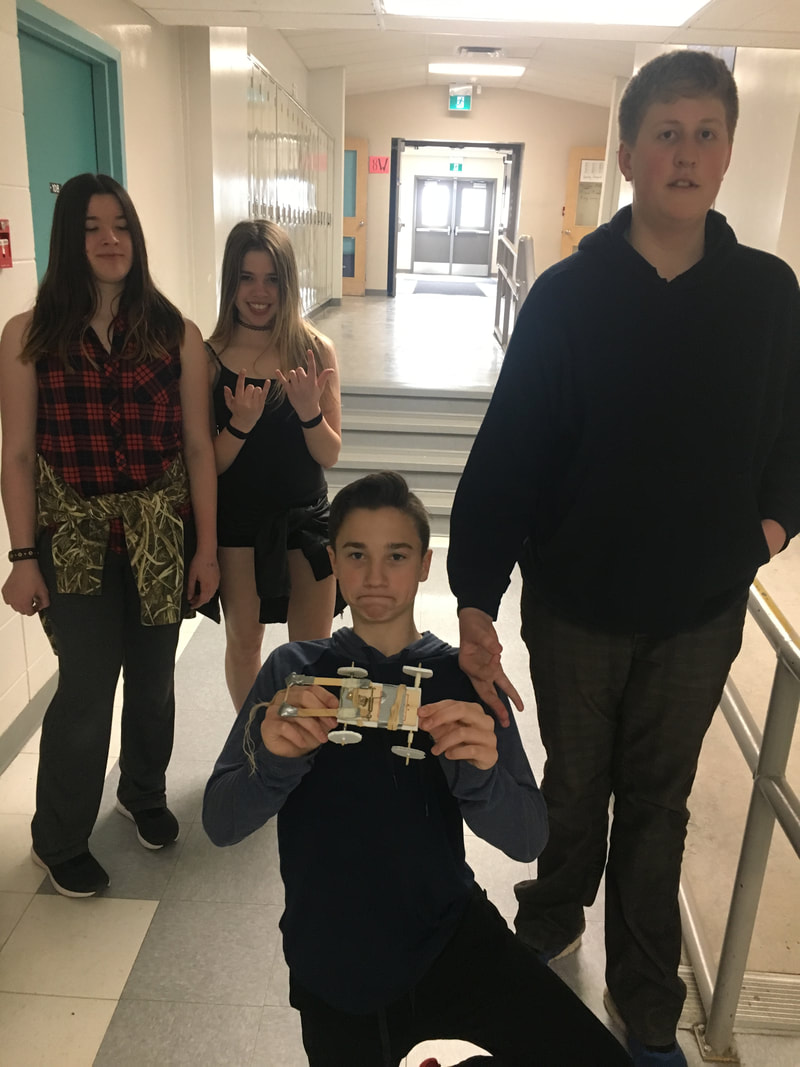 The winning team – PeaceKeepers of 8W
The winning team – PeaceKeepers of 8W 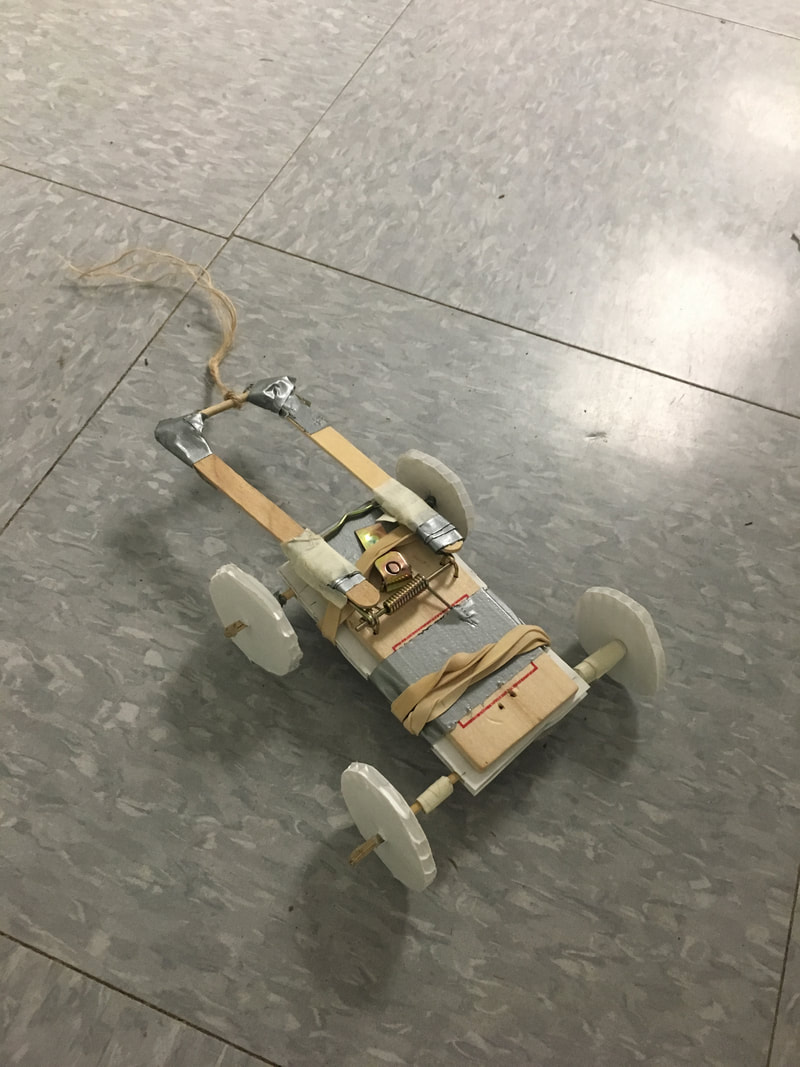 The winning car design!
The winning car design!







